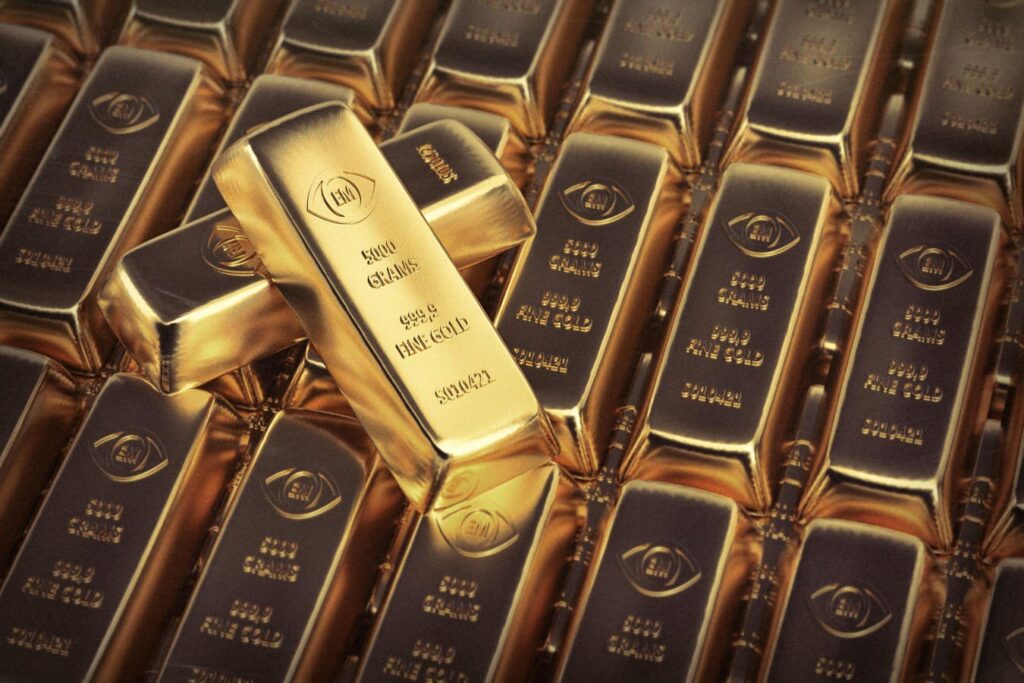It’s official – gold is now the world’s second-largest reserve asset for central banks. That’s after the European Central Bank confirmed the yellow metal had overtaken the euro on the back of feverish buying sprees that have pushed its price to record highs over the last 12 months.
In a report published earlier this week, the ECB acknowledged that gold bullion accounted for 20% of global official reserves in 2024 versus the euro’s 16% share.
The uptick in holdings implies that gold is now second only to the U.S. dollar, which commands around half (46%) of world’s reserve holding share.
How Did We Get Here?
It seems the reason behind it all can be attributed to the ECB’s own central banking peers. It noted in its report that: “Central banks continued to accumulate gold at a record pace.” Among these, the top three buyers in 2024 were the central banks of Poland, India and Turkey.
Russia and China also picked up the pace of their gold purchases, among many others. In total, central banks acquired more than 1,000 tonnes of gold in 2024 or a fifth of the total global annual production.
The said level of purchasing – of more than a 1,000 tonnes – has also been broadly similar for the third year in a row. What’s more, while buying by central banks has continued at pace, their gold sales volumes have remained relatively “modest”, according to the World Gold Council. It also implies that major Western holders of gold – i.e. the U.S., U.K., Germany, France and Italy largely held on to the yellow metal.
Overall, central bank gold reserves reached 36,000 tonnes in 2024, according to the ECB. The figure is tantalizingly close to the 38,000 tonnes in reserves recorded in the mid-1960s and the historic highs of the post-World War II Bretton Woods era.
But Why Now?
There are several reasons why the precious metals market is seeing the rising allure of gold among central banks while the ECB is having to confront the euro’s diminished status among its peers.
For starters, gold prices have hit record highs in recent years. In 2024 alone, gold rose by 26%. Last year’s rally has continued unabated well in to the second quarter of this year, to the point that the yellow metal posted a record high of $3,500 per troy ounce, having surged by another 25% so far this year.
Naturally, central banks are not just taking note of the gold price spike but also proactively partaking in keeping it higher. For gold is neither exposed to counterparty risk nor to international sanctions some central banks (e.g. Russia) ought to fret over.
In fact, buying levels of more than 1,000 tonnes per year three years in a row are reminiscent of central banks’ moves during the global financial crisis of 2008-09, and the subsequent transition to a low interest rate climate.
Retail investors are playing their part too, by flocking to the yellow metal and gold exchange traded funds, seeking a safe haven in a volatile world that’s having to contend with anxieties ranging geopolitical tension to trade wars. That’s despite gold being a non-yielding asset, but admittedly one that is indeed highly liquid.
Disclaimer: The above commentary is meant to stimulate discussion based on the author’s opinion and analysis offered in a personal capacity. It is not solicitation, recommendation or investment advice to trade gold stocks, futures, options or products. Gold markets can be highly volatile and opinions in the sector may change instantaneously and without notice.
Read the full article here
















